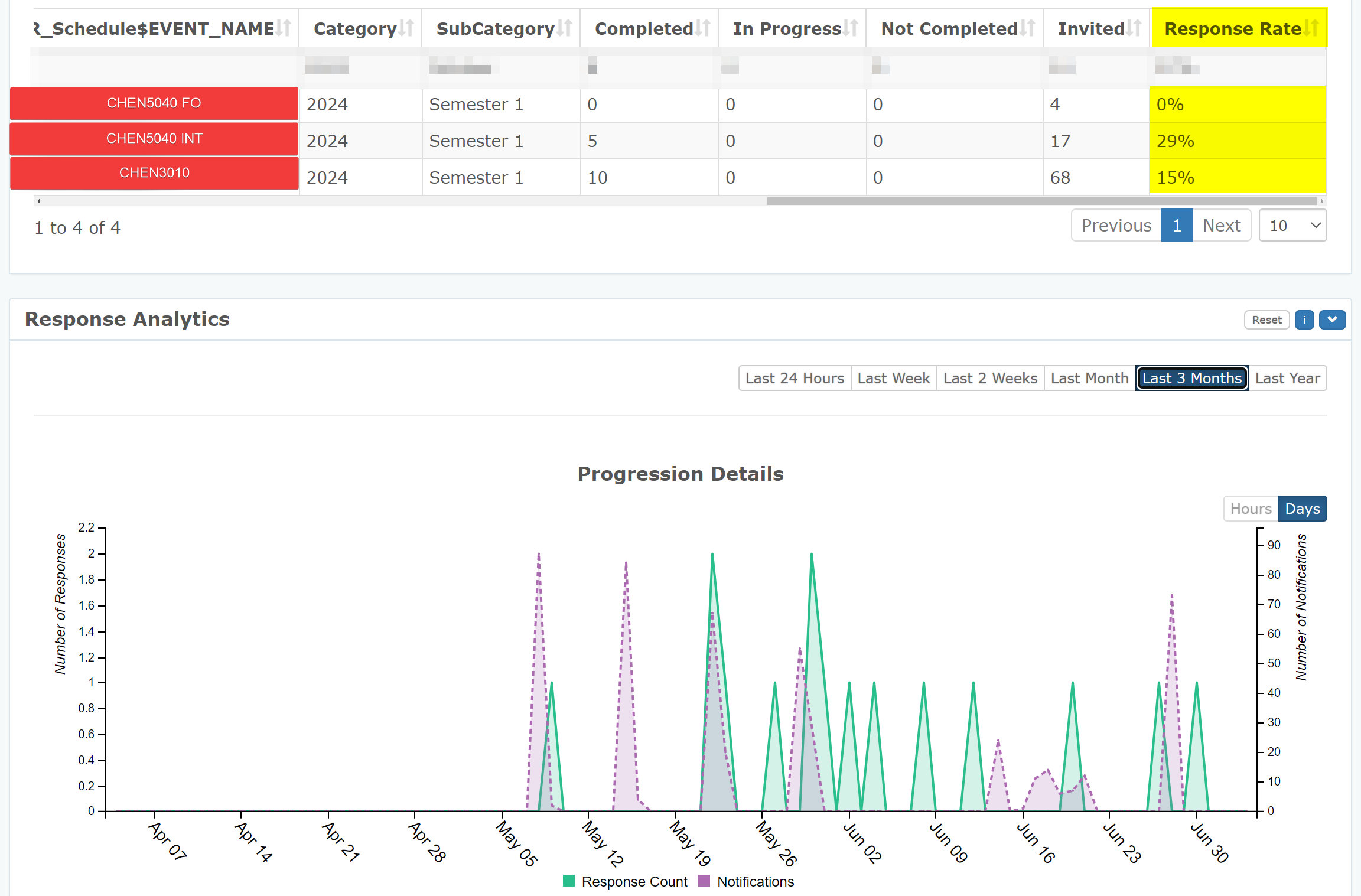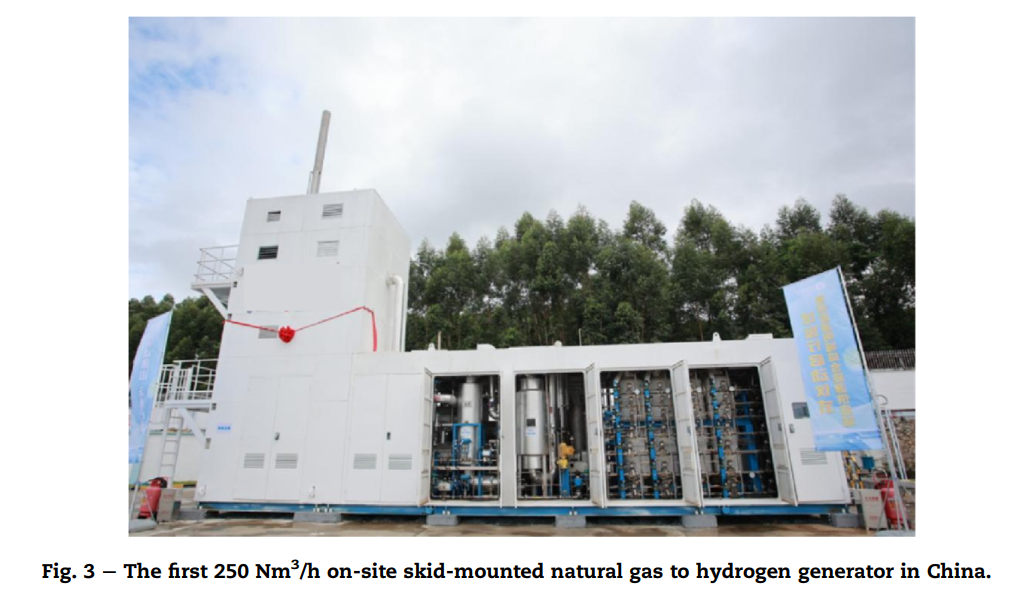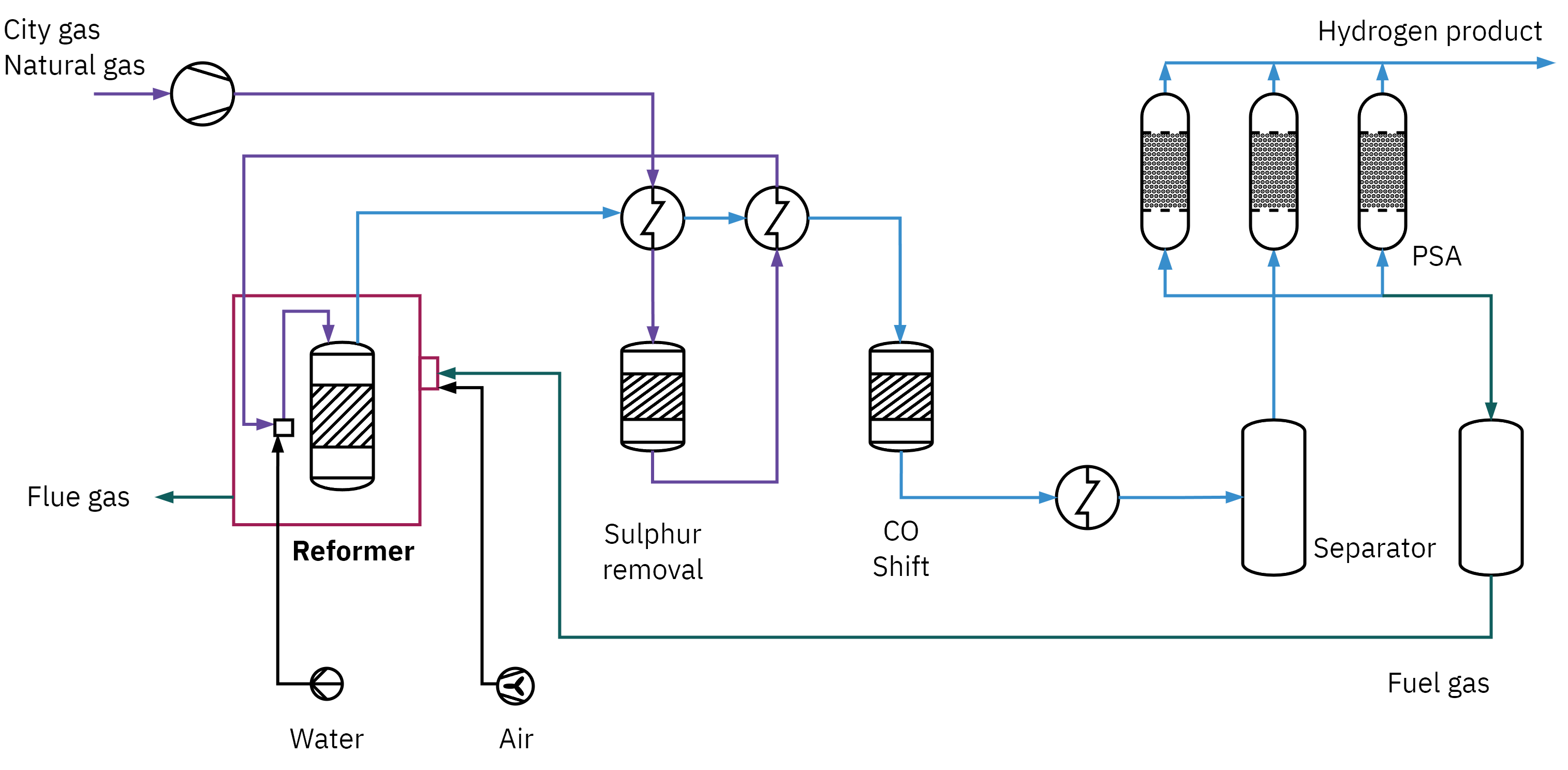Innovative teaching and assessment methods
Chemical Reaction Engineering
Outline
We tried to implement a different teaching method this semester in the reaction engineering unit. The method includes teaching through in-class, problem-solving activities, using programming tools for solving simultaneous ODEs, open-book portfolio assessments, etc. Our attempt is to provide students interactive learning and project or problem-based learning and assess them on their understanding of concept.
The session will focus on sharing the changes we made, teaching strategies, and assessment methods. We like to share the outcomes of these changes, including student engagement, comprehension levels, challenges, and overall performance in the unit. We also want to gather feedback from you, exchange insights, and discuss potential improvements or further innovations that could be integrated into future courses.
The session will also be an excellent opportunity to reflect on best practices, pedagogical challenges, and the impact of novel approaches on student learning outcomes in the engineering discipline.
Motivation
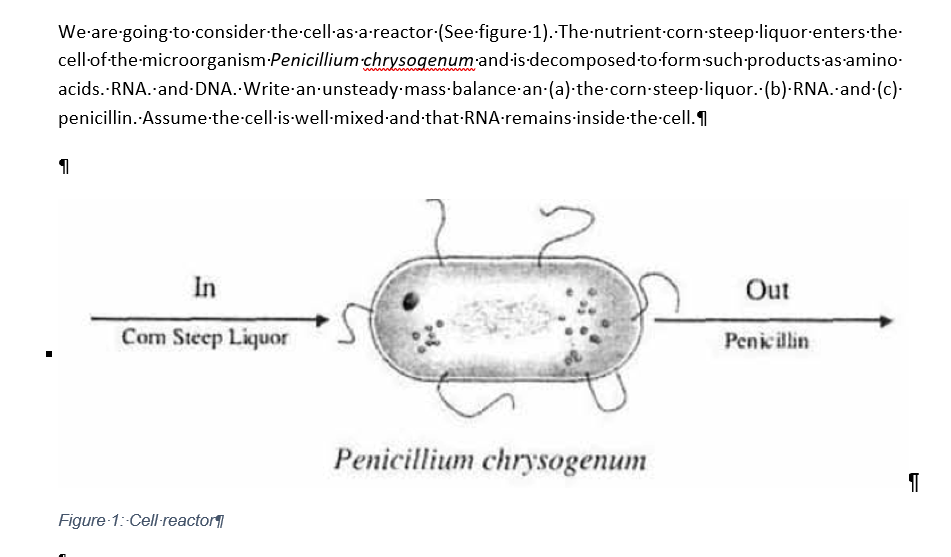


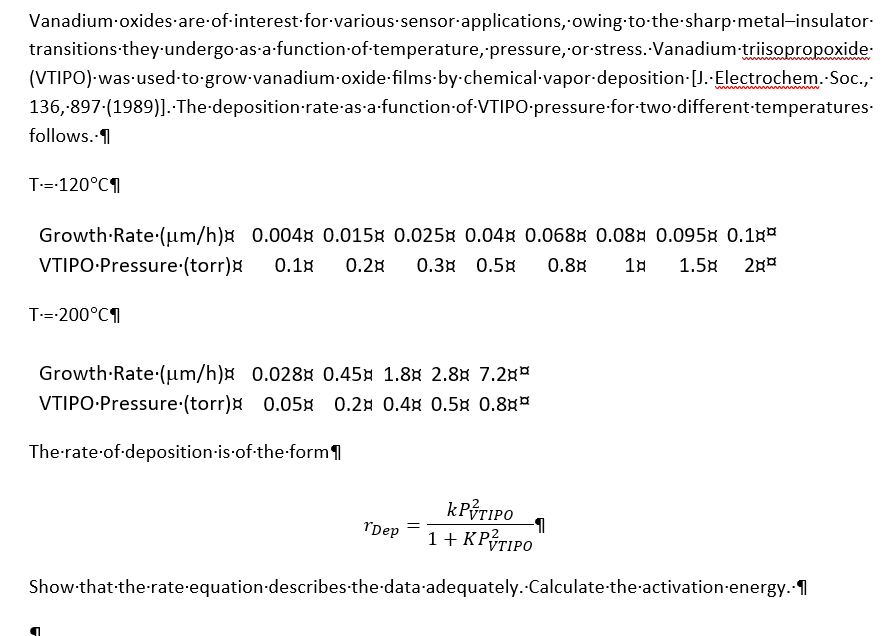
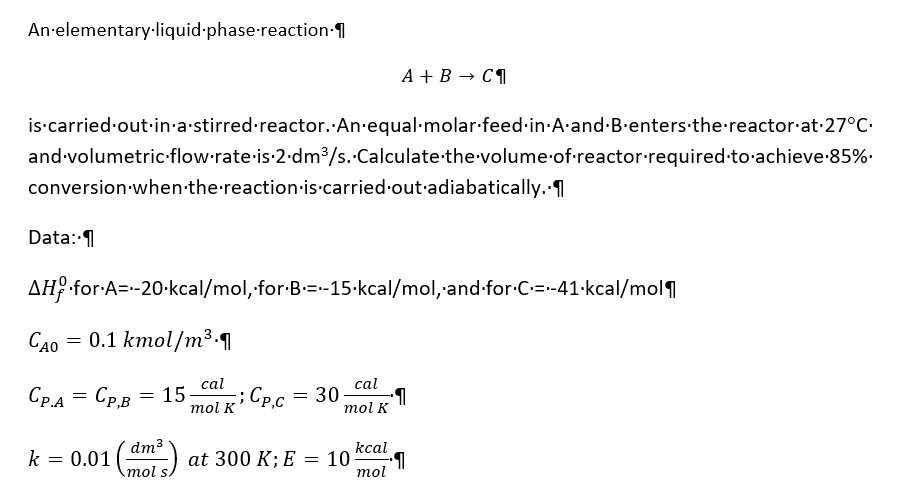
Motivation

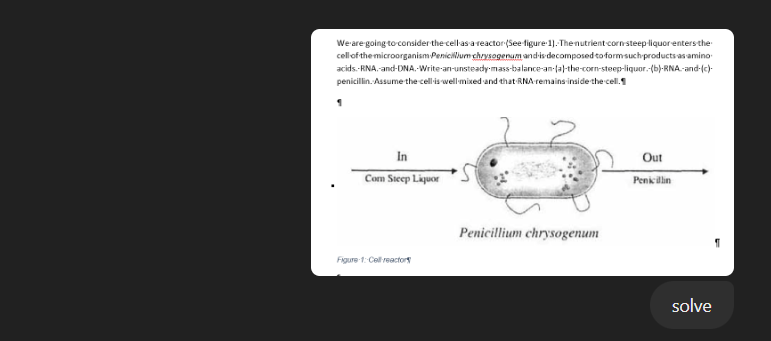
Correctly identifies species, applies generalized mole balance to the species
Correctly identifies batch/ semi-batch nature of some of the species and develops appropriate balance equations
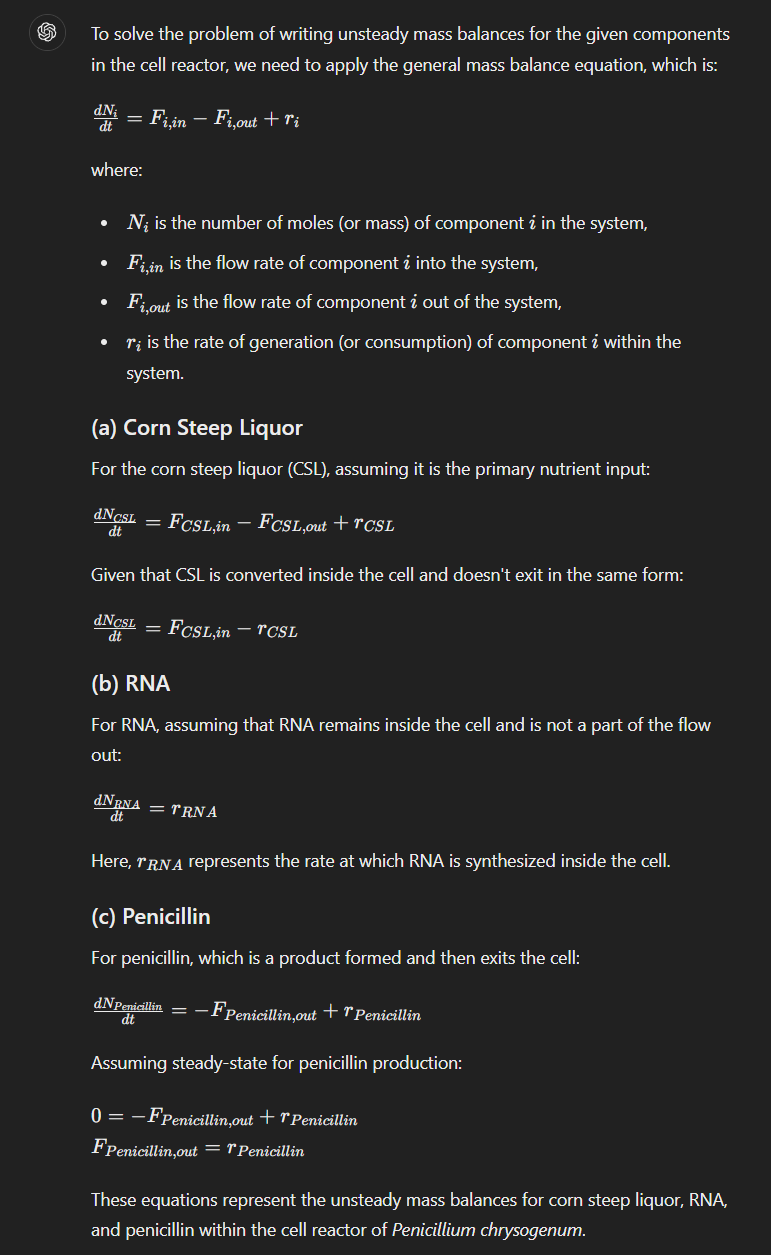
Motivation

Correctly identifies calculation of
Correctly calculates value for
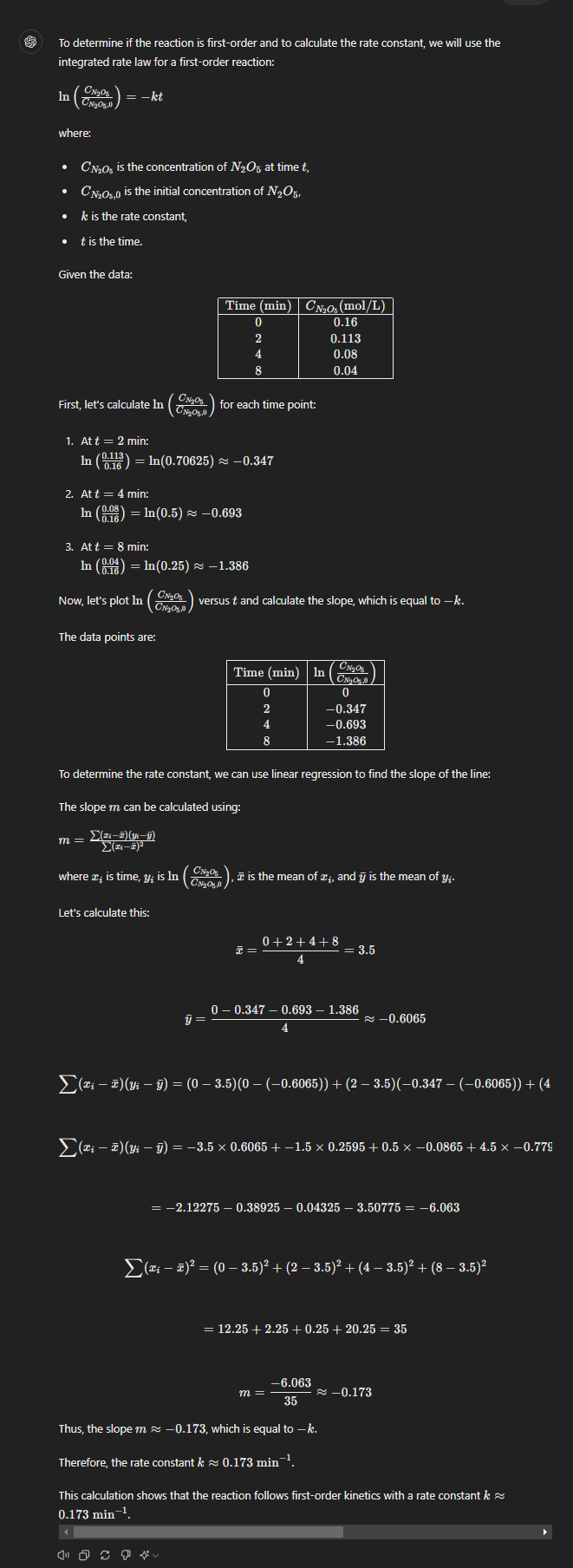
Motivation

Uses correct formula for
Formulas used for CSTR, and PFR not correct (in this context)
Predicts higher conversion for CSTR compared to PFR
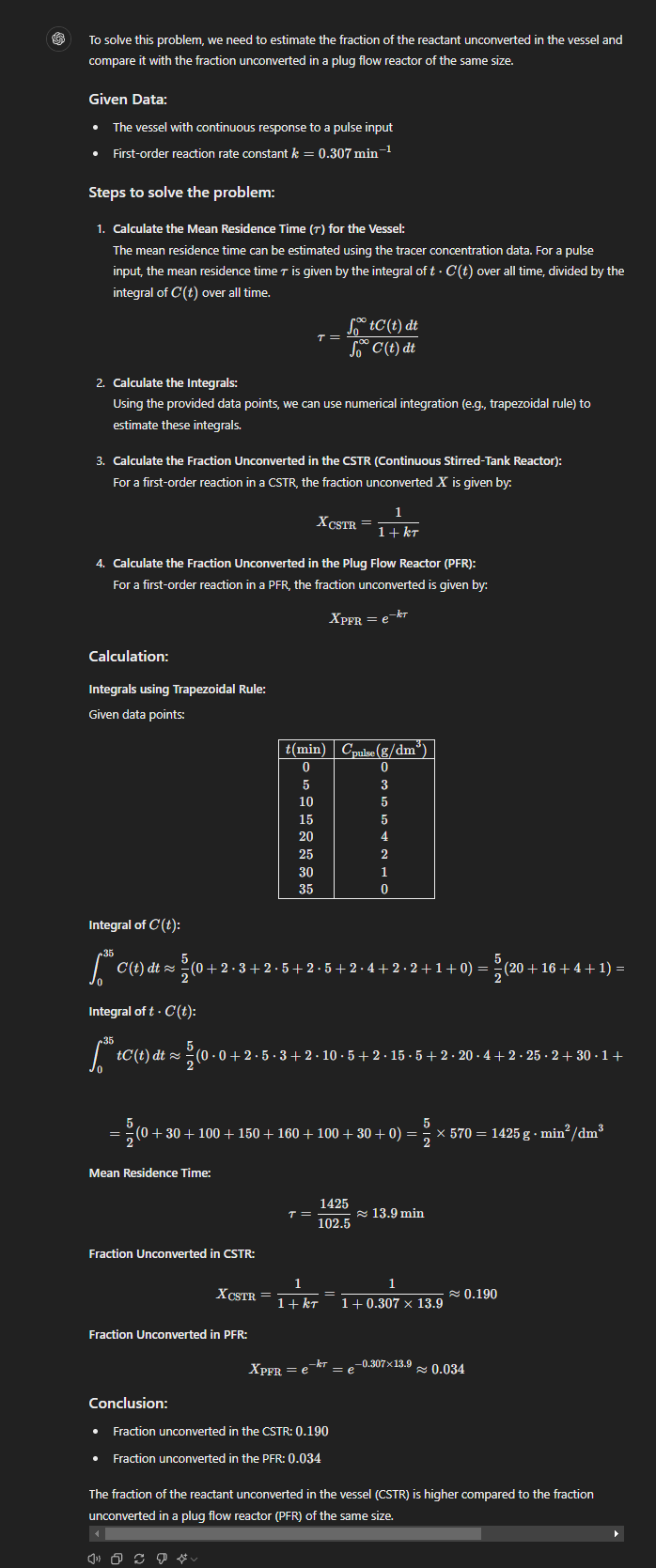
Motivation

Did not get the question. So the first part is not answered.
However, solution is correct for calculation of
Uses much advanced curve fitting (
scipy.optimize.curve_fit) for calculations.

Motivation

Cites mostly correct formulas
Some individual quantities (such as
Does not calculate
Thus volume calculation is wrong. The procedure is essentially correct.
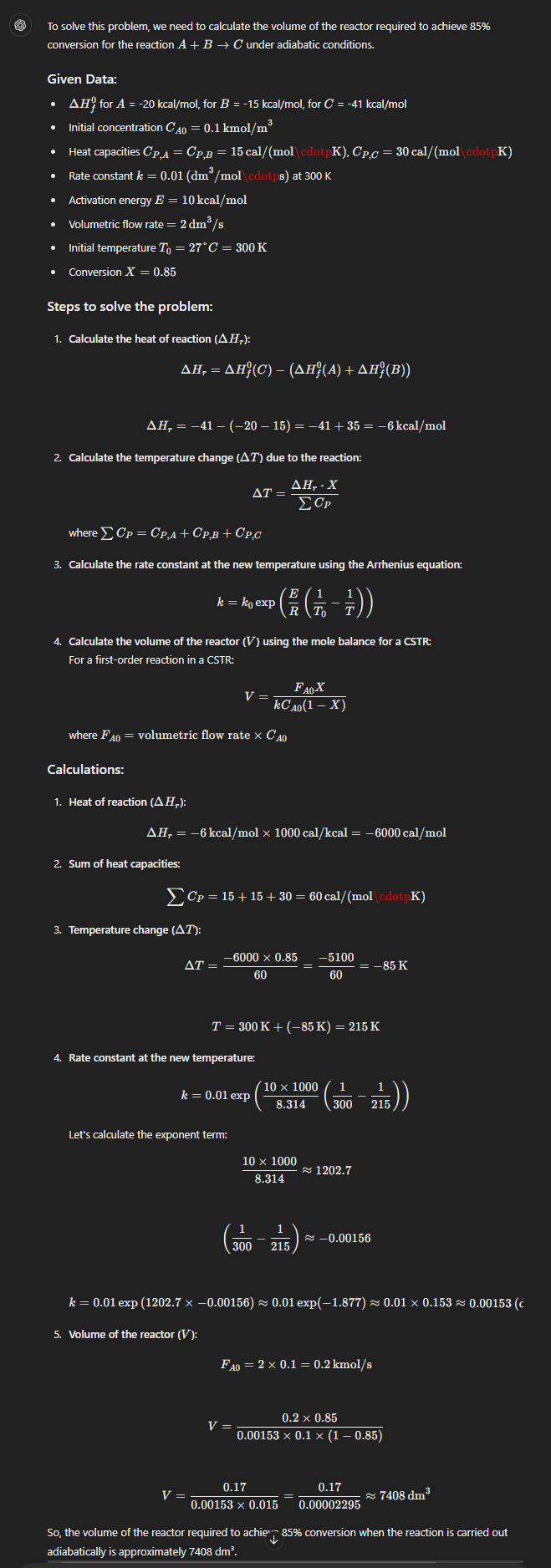
Motivation
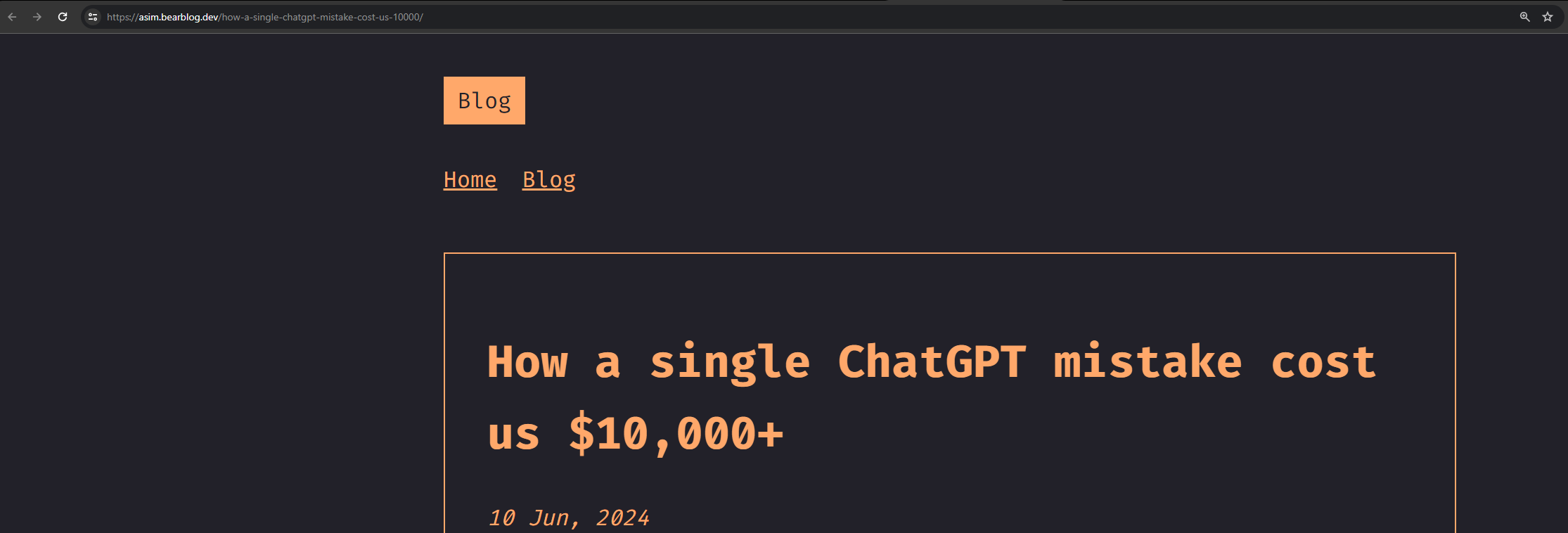
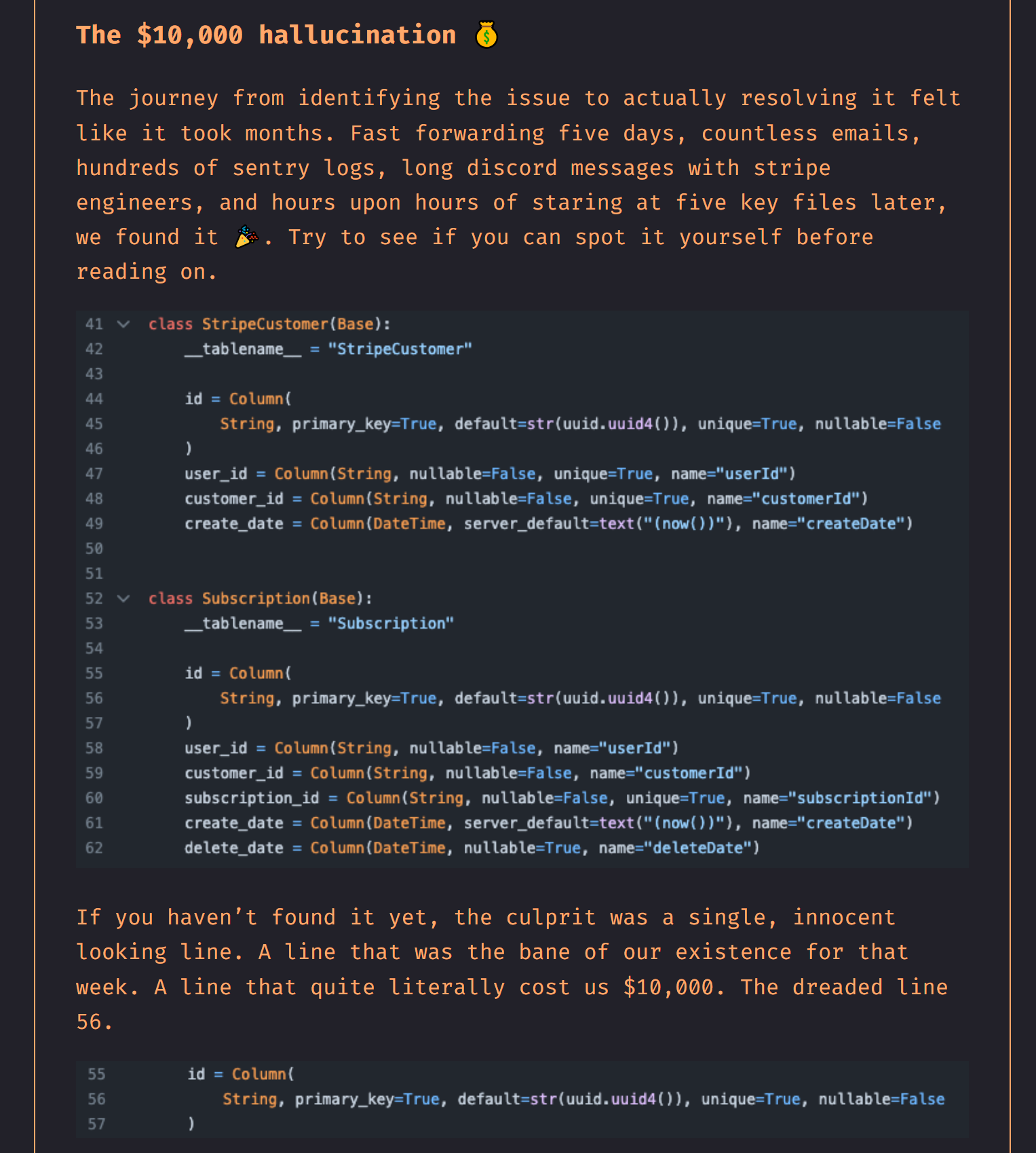
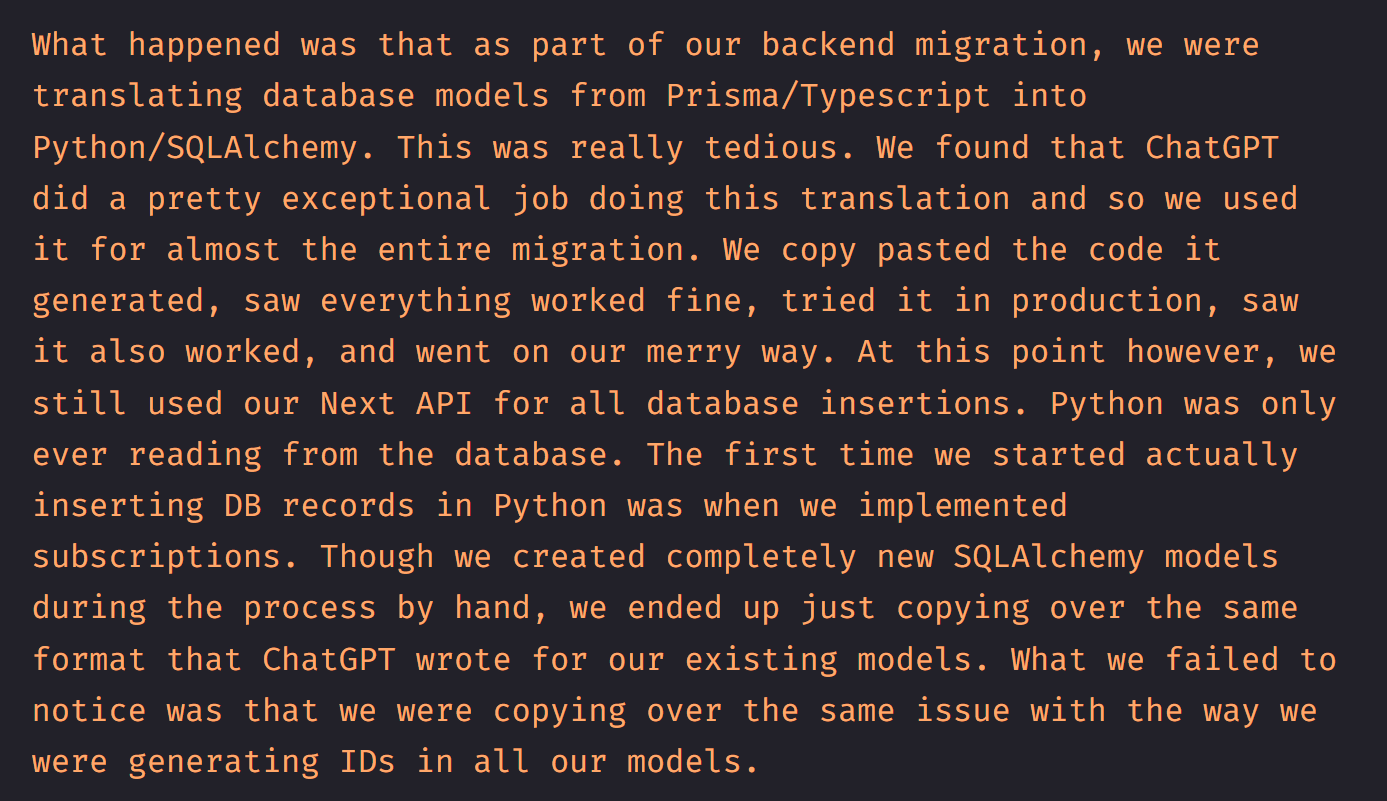
Motivation
How do we adapt our teaching in Post ChatGPT world?
Are we creating (training) inferior GPT models?
How do we provide insight into the subject without making it too theoretical?
How do we train students on real world problems?
Implementation vision
Apprenticeship model
- Students work to hone their craft under guidance of a master craftsman.
Minimum viable concept (MVC)
- What are the key core concepts that the student must master in order to understand the subject?
Reinforcing the MVCs using practical problems
Work on complex problems by facilitating solutions using computers.
Instant gratification
Students can see progress they are making in the unit (almost) real time.
Interactive project or problem-based learning
Systems thinking
How does the subject fit in grand scheme of things?
How can I use this knowledge somewhere else?
Continuous assessment on understanding of concepts
Implementation plan
All activities designed for in-person classes
No distinction between lectures/ workshops
- Fluid format
Comprehensive lecture material
Lecture slides
Notes
In class activities
Prelab modules and worksheets
Workshop problems
Wide use of computer aided solutions
Assessments
- No closed book exams
- Limits the kind of problems/ questions you can set
- Students study for the exams (previous papers/ repeat workshop/ in-class problems etc) and not to understand the subject.
- A mix of continuous assessment (portfolio), labwork, and final project
- No closed book exams
Changes made to the unit
Syllabus
- Mostly unchanged
- Removed portions of unit material that focused on archaic methods of solution (e.g. graphical differentiation)
- Focus on numerical solution and not analytical solution
Assessments
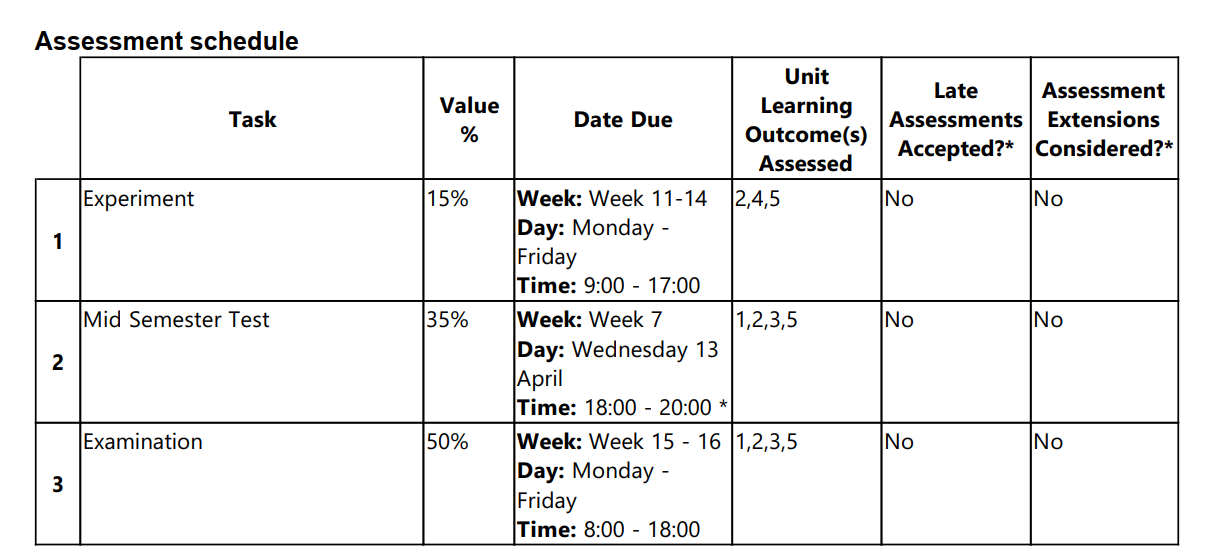

Assessments
Experiment
- 30% instead of 15%
- Change in marking rubric
- Pre-experiment memo (individual activity): Make sure the student understands the experiment and has independently completed HSRA
- Conducting experiments: Each student marked by the demonstrators for their conduct during lab
- Final report (group submission)
Portfolio
- A set of 8 individual portfolios (mix of take home and in class), best 6 considered.
- Students work on the same problem and tackle different (reaction engineering) aspects in each portfolio
- All 8 tasks are linked to each other
- Students can appreciate chemical reactor design with varying degrees of complexity.
Portfolio
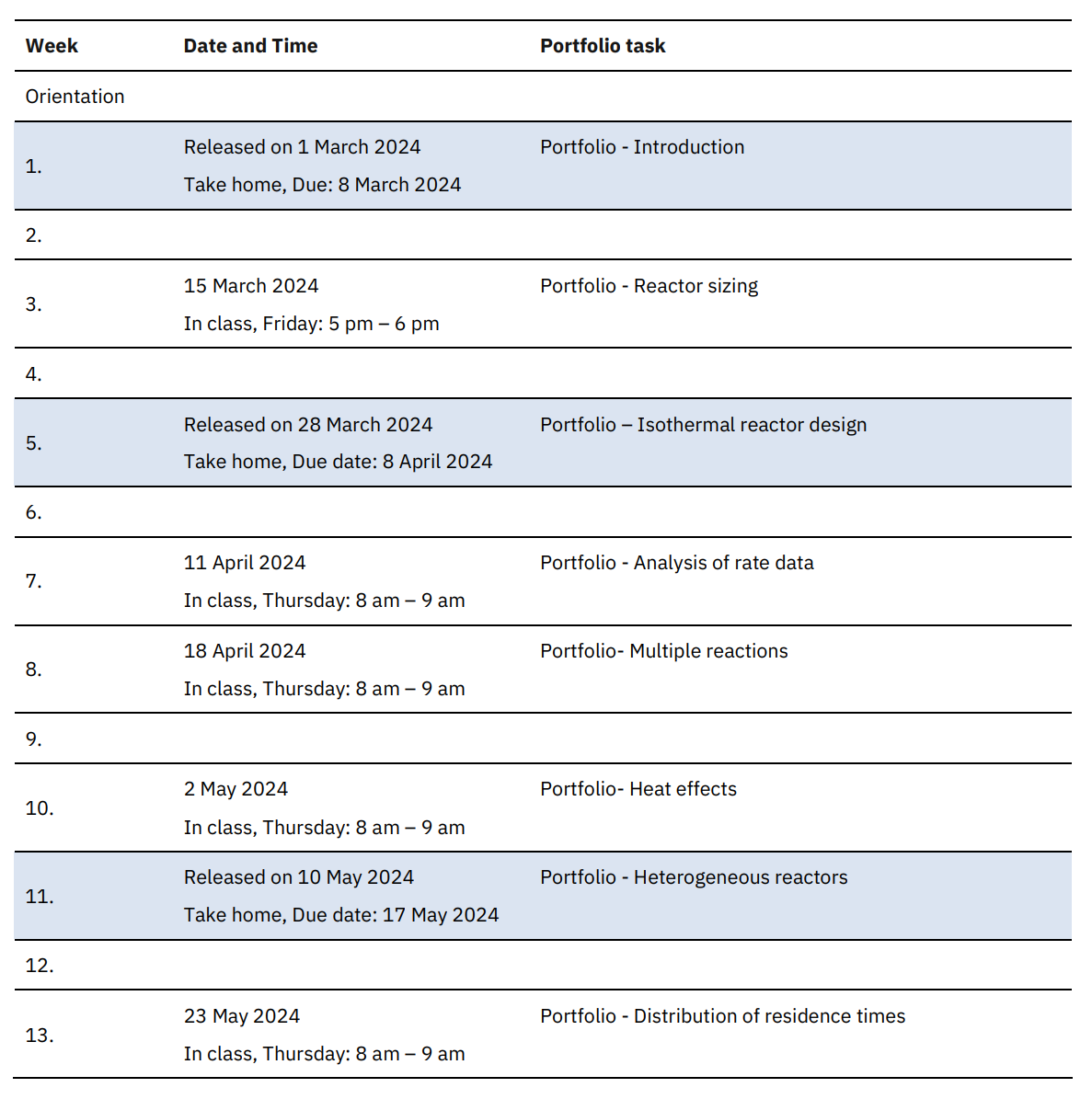
Assessments
Project
Group activity
Real life highly relevant problem
Highly open ended
This year’s project
Small scale skid mounted hydrogen production from city gas by reforming
Significant commercial activity in this area in Korea and Japan
Student engagement
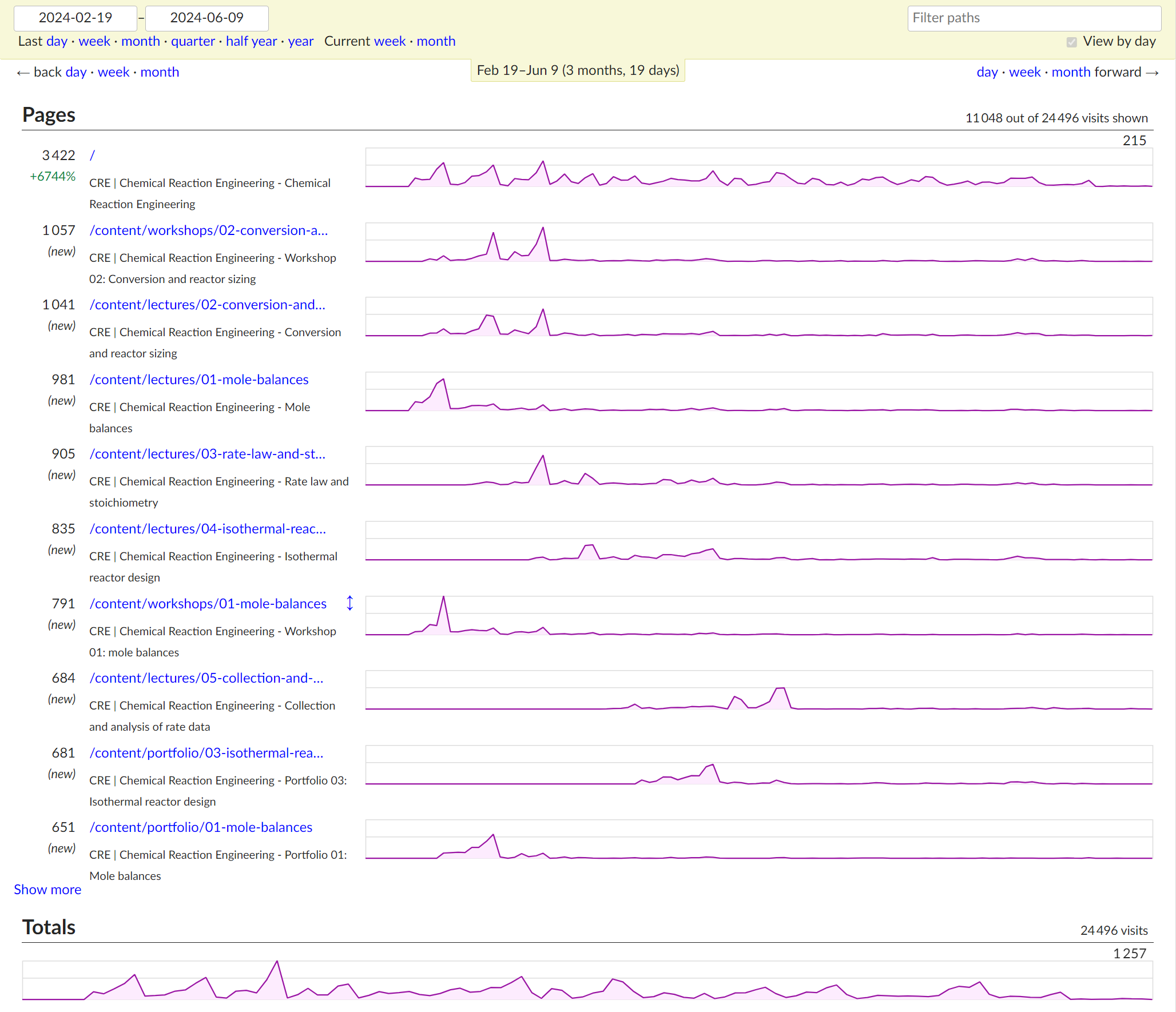
Student engagement
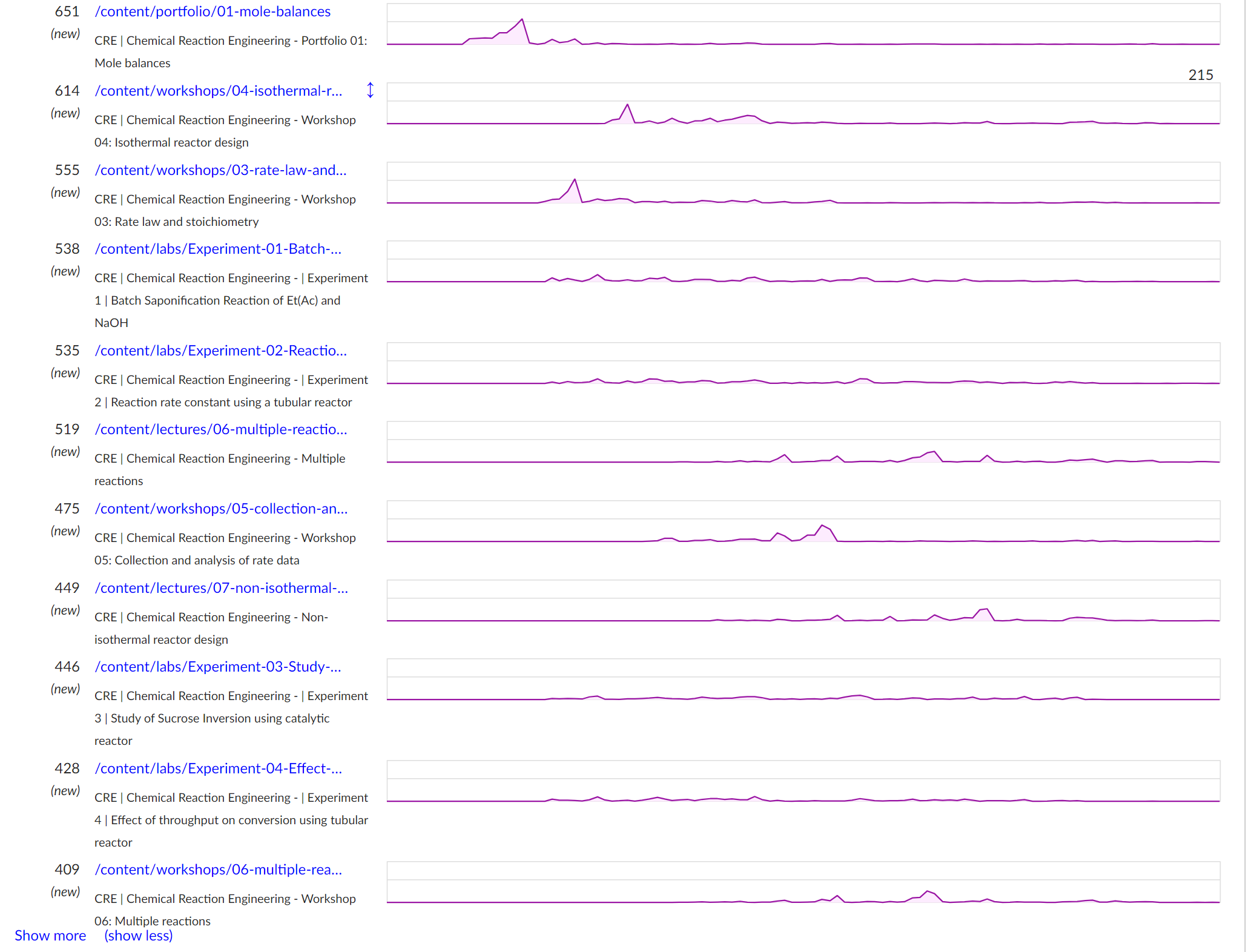
Student engagement
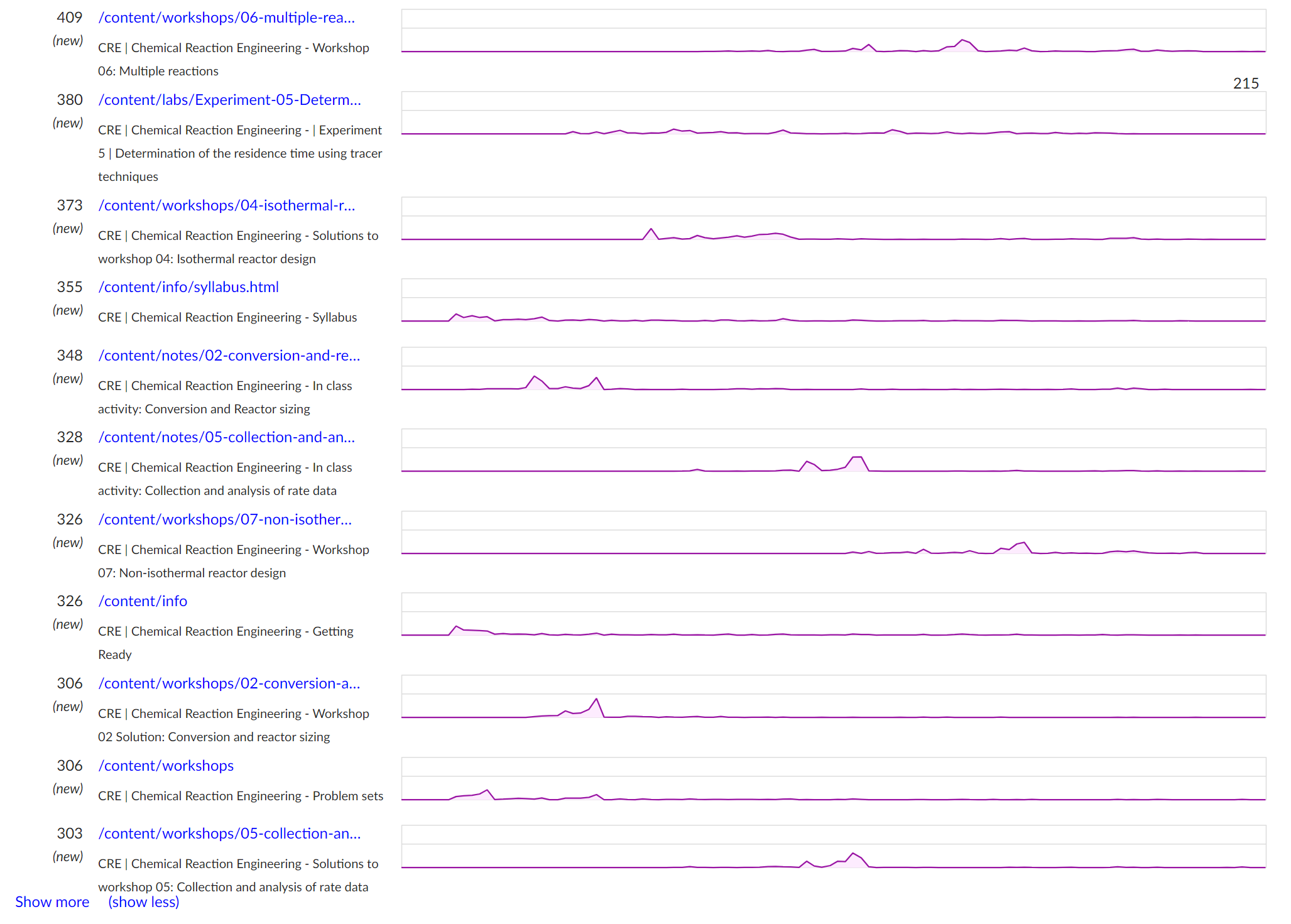
Student engagement: lectures
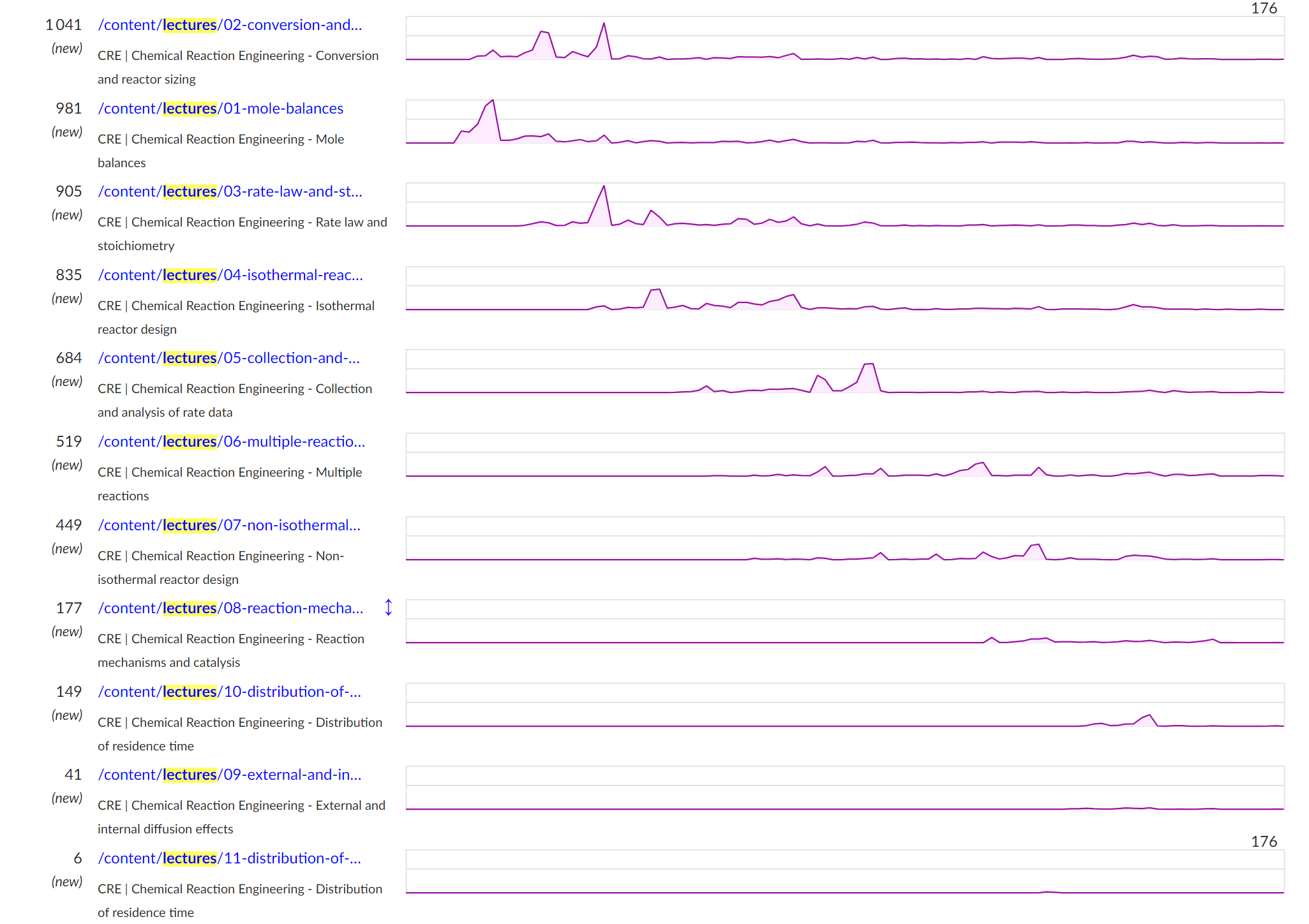
Student engagement: workshops

Student engagement: labs
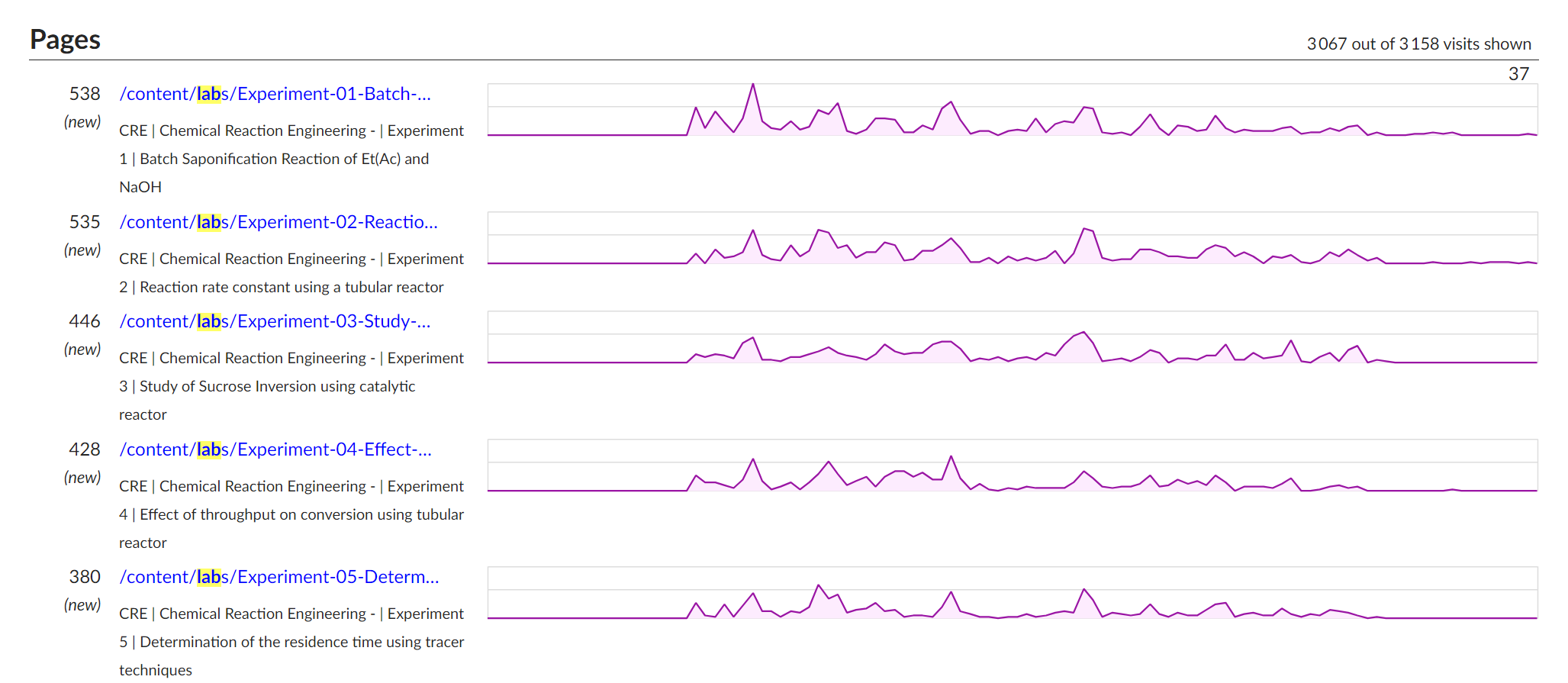
Overall performance
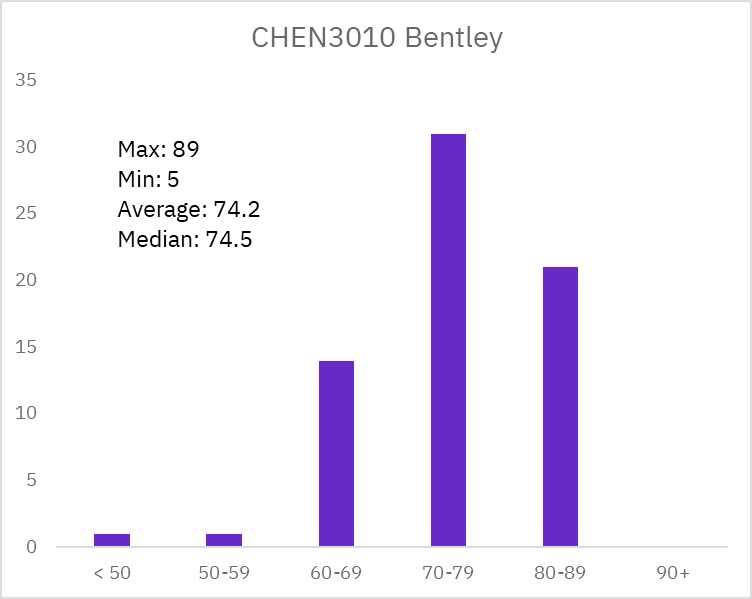
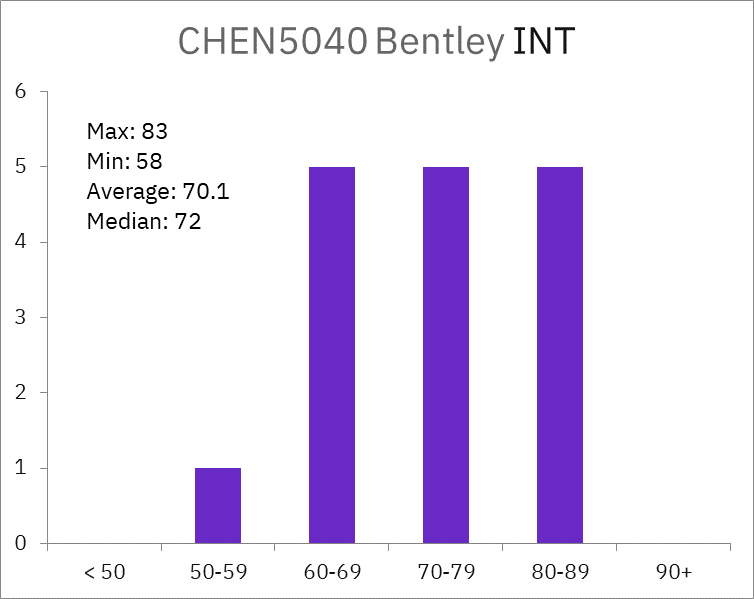
- 1 fail (Non participation in most activities)
- Marks distribution
| Portfolio (30) | 19.72 | 65.7% |
| Lab (30) | 24.71 | 82.4% |
| Project (40) | 29.55 | 73.9% |
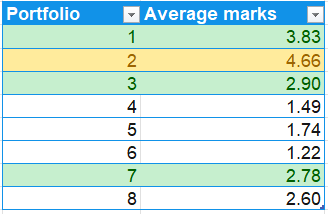
Insight survey
